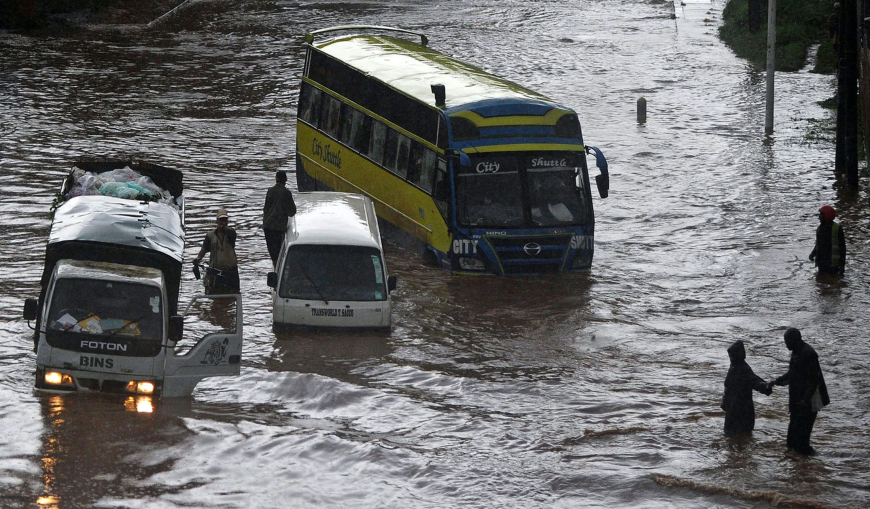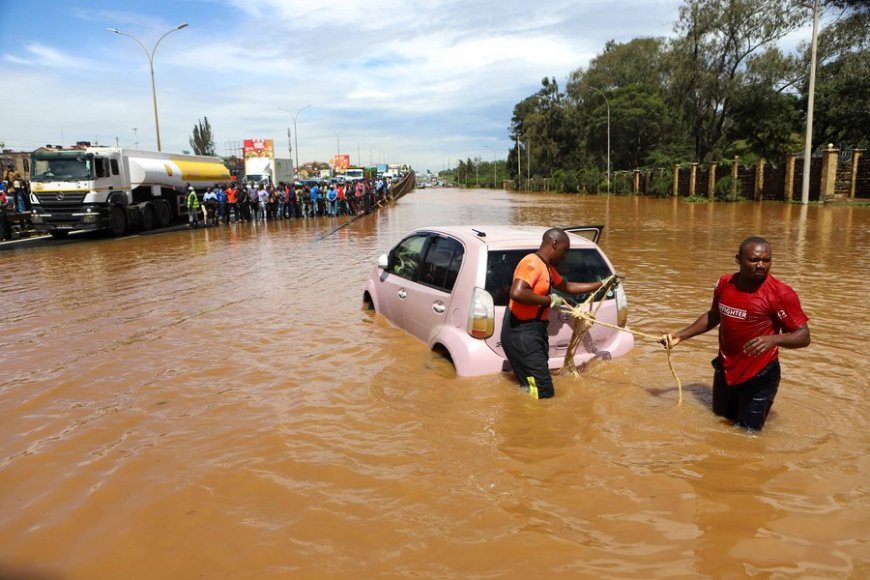Beware Of Floods: Kenya Met Warns Of Heavy Rainfall In Nairobi, Kisumu & Other Regions
Forecasts show that the downpour could exceed 30 millimetres within 24 hours, a level high enough to trigger flooding and infrastructure damage in vulnerable areas.

Kenya is on high alert as the Meteorological Department has issued a warning of heavy rainfall expected to sweep across multiple regions beginning Thursday, October 23, 2025.
The Department, which operates under the Ministry of Environment and Climate Change, says the current rainfall pounding the Lake Victoria Basin, Rift Valley, and the highlands west of the Rift is set to intensify and spread eastward in the coming days.
Forecasts show that the downpour could exceed 30 millimetres within 24 hours, a level high enough to trigger flooding and infrastructure damage in vulnerable areas.
The heavy rains are projected to move towards the highlands east of the Rift Valley, including Nairobi, and parts of the Southeastern Lowlands such as Machakos, Kajiado, and Makueni.

Photo of heavy rainfall in Nairobi Central Business District (CBD) as taken on January 19, 2024. /MARVIN CHEGE.VIRAL TEA KE
A long list of counties is expected to be affected, including Kisumu, Homa Bay, Siaya, Migori, Busia, Bungoma, Kakamega, Vihiga, Nakuru, Kericho, Nandi, Bomet, Nyamira, Nyandarua, Murang’a, Nyeri, Embu, Meru, Tharaka Nithi, Kirinyaga, Laikipia, and Turkana, among others.
"Rainfall currently affecting parts of the Lake Victoria Basin, Rift Valley, and Highlands West of the Rift Valley is expected to intensify to more than 30mm in 24 hours and spread to the Highlands East of the Rift (including Nairobi) and South-Eastern Lowlands from Thursday, 23rd October 2025," stated Kenya Met in its advisory.
"The heavy rainfall is expected to continue and extend to parts of the North-East from 30th October 2025." The Kenya Meteorological Department says the rainfall marks the official onset of the short rains season (October–December 2025), with the heaviest impact likely in western, central, and highland regions.
Experts warn that while the short rains are normal during this period, climate change has intensified their frequency and severity, making flash floods, landslides, and stormwater surges more likely.
Urban areas such as Nairobi and Nakuru are particularly at risk due to poor drainage and unplanned construction, which often lead to flooding after prolonged rainfall.
The public is being urged to take immediate precautionary measures. Residents should stay updated through verified reports from the Kenya Meteorological Department and local disaster response units, avoiding reliance on misleading social media updates.
Further, those living near rivers, flood plains, or steep slopes should relocate temporarily or stay alert for early warning signs of floods or landslides.
Homeowners are advised to clear blocked drainage channels, secure rooftops, and store emergency supplies such as clean water, flashlights, and first aid kits.
Motorists should exercise caution on slippery and flooded roads, as hidden potholes or open manholes can be deadly during heavy rain.
Farmers are encouraged to move livestock to higher ground and avoid planting in areas prone to flooding until the rains stabilize.
Finally, communities are being reminded to look out for one another—especially the elderly, people with disabilities, and children—who are often most vulnerable during disasters.
Kenya has experienced devastating floods in recent years that have claimed lives and displaced thousands. Authorities emphasize that timely action and preparedness can prevent a repeat of such tragedies.


 FaithAnne Mwaura
FaithAnne Mwaura 




